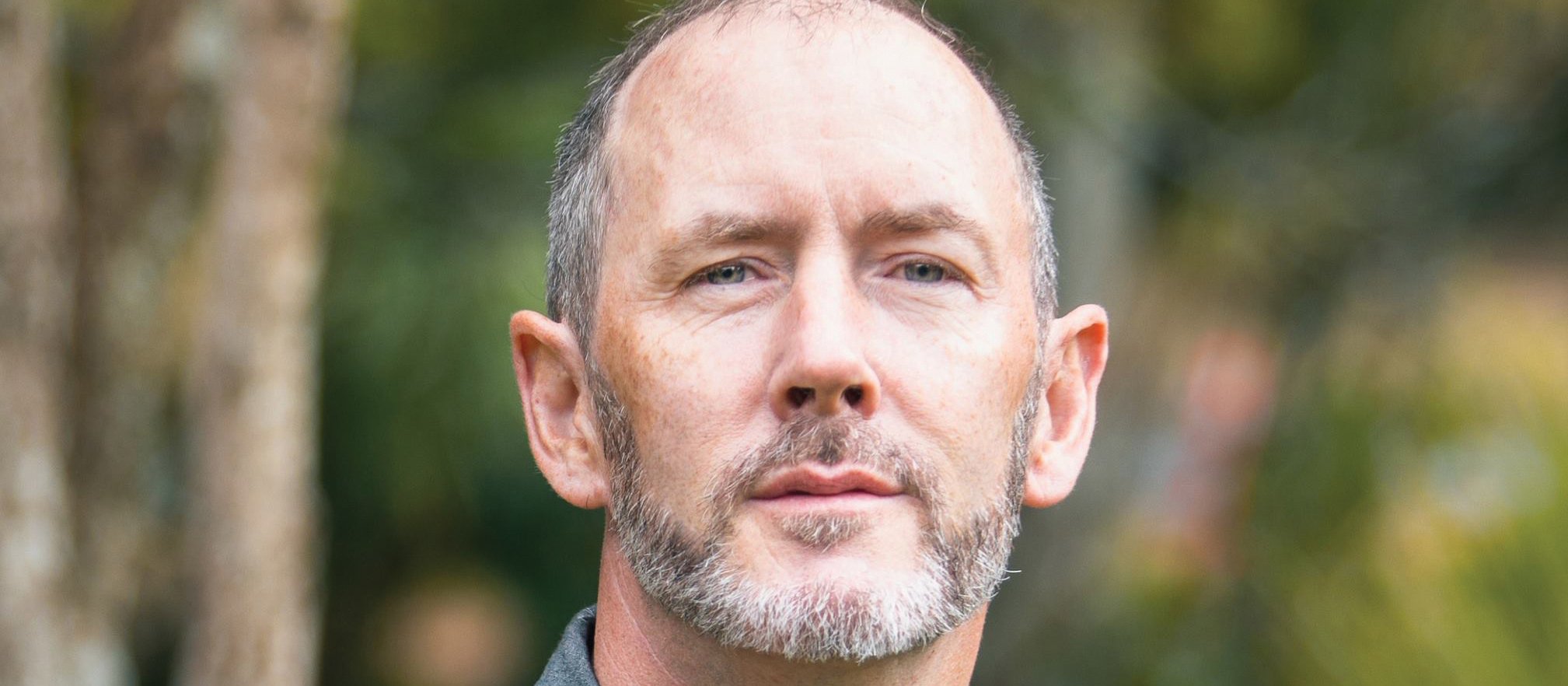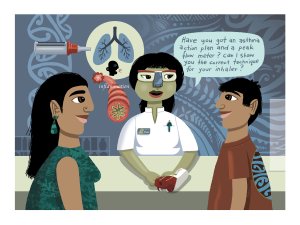Academic pharmacist Nataly Martini discusses the medical management of asthma in adults and adolescents, which has evolved to prioritise early anti-inflammatory treatment. She also explains how to improve patient outcomes by proactively identifying poor asthma control and supporting equitable access to education and treatment
Time to take a closer look at compassion fatigue
Time to take a closer look at compassion fatigue

Efficiency, waitlists and speed are all measured in our healthcare system, but what about compassion? Researchers from the Compassion Lab at the University of Auckland explain to Paulette Crowley why the value needs to be measured like a KPI
All health professionals know that a kind look or word to a patient who is struggling can do wonders in helping them to feel better.
In a healthcare context, that kindness is known as compassion, a concept proven to improve outcomes of patients, healthcare professionals and the systems they work in, researchers Stephen Trzeciak and Anthony Mazzarelli propose in their book Compassionomics.
University of Auckland researchers Nathan Consedine and Alina Pavlova have also studied how compassion leads to better outcomes for patients and clinicians. Their work, published in the Journal of Internal Medicine in February this year, focused on the value discrepancies between healthcare organisations and clinicians and how this hinders clinicians’ ability to be compassionate.
In the study, more than 1000 practising New Zealand healthcare workers, which included doctors, nurses and allied health professionals, completed an anonymous online survey that asked questions about compassion ability, burnout, job satisfaction, absenteeism and consideration of early retirement.
Professor Consedine says it’s time that compassion was treated as more than a value taken for granted in health professionals, who must practise with compassion in all medical codes of ethics.
Organisations will often list compassion as a value, but that’s not reflected in the environment they provide. “We kid ourselves we value it, when we really don’t.”
Until compassion is measured as a key performance indicator (KPI) – the “levers of change inside most big organisations that are measured, recognised and rewarded” – it won’t be taken seriously
“Unless we get it into those positions, it’s going to be hard to enact systemic change. Until now, all we have is lots of virtue signalling and bad deliverables.”
Historically, compassion evolved as a system to facilitate caregiving, typically among people who were related to each other and where there was a reasonable likelihood of reciprocal altruism in the tribe, he says.
“It was not in a society where you’re confronted with thousands of strangers on a daily basis.”
By definition, compassion is a response to suffering in other people, he says.
Empathy is slightly different, health psychologist and PhD candidate Ms Pavlova says. It’s an essential part of compassion but not necessarily the same thing.
“Empathy is an ability to stand in someone’s shoes, to feel what they feel,” she says. “Empathy can also be cognitive – can you put yourself in someone’s shoes without necessarily feeling it?”
Compassion requires courage and wisdom and is present when there is a motivation or desire to do something in response to the problem. “What we feel is empathy, but what we do with it is compassion.”
Compassion fatigue, when healthcare professionals struggle to find empathy or care for their patients due to being burnt out, is an “unhelpful myth”, Ms Pavlova says.
On the contrary, she says practising compassion is recharging – the more you give, the more you can give. “Compassion leads to compassion.”
The notion of compassion fatigue individualises the wider problem of burnout and hides the underlying systemic issues that cause it, she says.
Professor Consedine agrees compassion fatigue is a sign of being burnt out.
“By the time you get compassion fatigue, you’re tired of everything – traffic, your children, your dog, spaghetti bolognese – everything,” he says. “You’re fried by life – you’re not specifically tired of caring.”
Ms Pavlova doesn’t advocate organisations measuring compassion in clinicians as a solution to addressing compassion fatigue. Doing that would imply the worker wasn’t resilient enough and could make them feel attacked for being burnt out.
“Studies show that the negative association of compassion is burnout.”
Healthcare leaders surveyed said they feared ridicule when revealing their vulnerabilities, she says. They also reported feeling disconnect between proffered organisational values, such as compassion, respect and dignity, with what they experienced in their working environment.
Again, it’s the individual focus, rather than the system focus,” Ms Pavlova says. Compassion should instead be measured by patients and the healthcare workers themselves.
Healthcare is undoubtedly a business and, over time, has merged with economic and business values, Professor Consedine says.
Healthcare in New Zealand is viewed as a “zero-sum game”, implying that the game is over once the money runs out. “Then we let the dollars do all the talking.”
However, money is only part of the answer to good healthcare. He points to the US, the Western country that spends the most on healthcare but has consistently lower life expectancies than comparable countries. “It’s not the solution to everything.”
He says it’s time for healthcare values to be overhauled instead of blaming healthcare professionals for their own burnout.
“We have to think systemically about what the problem is – there’s no unitary solution. We have to stop blaming our healthcare people. It’s madness.”
No amount of tinkering with expensive and time-consuming interventions on individuals will make a difference like incentivising compassion as a KPI, he says.
“You can’t just say that we need to get some resiliency training so that our staff can tolerate the ridiculous situation we’ve put them in.
“People will still dance to the tune of the piper, and the tune in healthcare is about risk management, bed turnover, rapidity and units.”
Nothing in the current environment incentivises compassion – just an assumption that healthcare workers are inherently compassionate people who want to help others, he says.
“They say, ‘People should care anyway.’ But that just orients us to the professional and takes away everything else. For example, it takes away the role of environment, and we shouldn’t be naive about that. It really matters – it impacts people’s ability to care.”
Patient experience surveys, which are commonly requested, might not be hitting the mark when measuring compassion, perhaps because healthcare administrators don’t want to know the answer, he says.
Precise data could be gathered on a five-point scale at the end of treatments, he suggests.
“It could be asked, ‘To what extent was your medical care provided with compassion?’”
If those results were measured as KPIs, it would soon reveal which departments were and weren’t performing their jobs compassionately. It would follow that bosses would urge for improvements every quarter, and change would have to happen.
“Everything flows from the KPIs.”
The Sinclair Compassion Questionnaire from Canada’s Research Lab evaluates compassion from a patient perspective.
A new scale based on the Sinclair method was recently adapted by the Compassion Lab led by Professor Consedine.
The scale was adapted and validated for the New Zealand healthcare workforce in conjunction with the Canadian lab about a year ago, Ms Pavlova says.
The questionnaire, which is free of charge, can be requested from compassionmeasure.com







